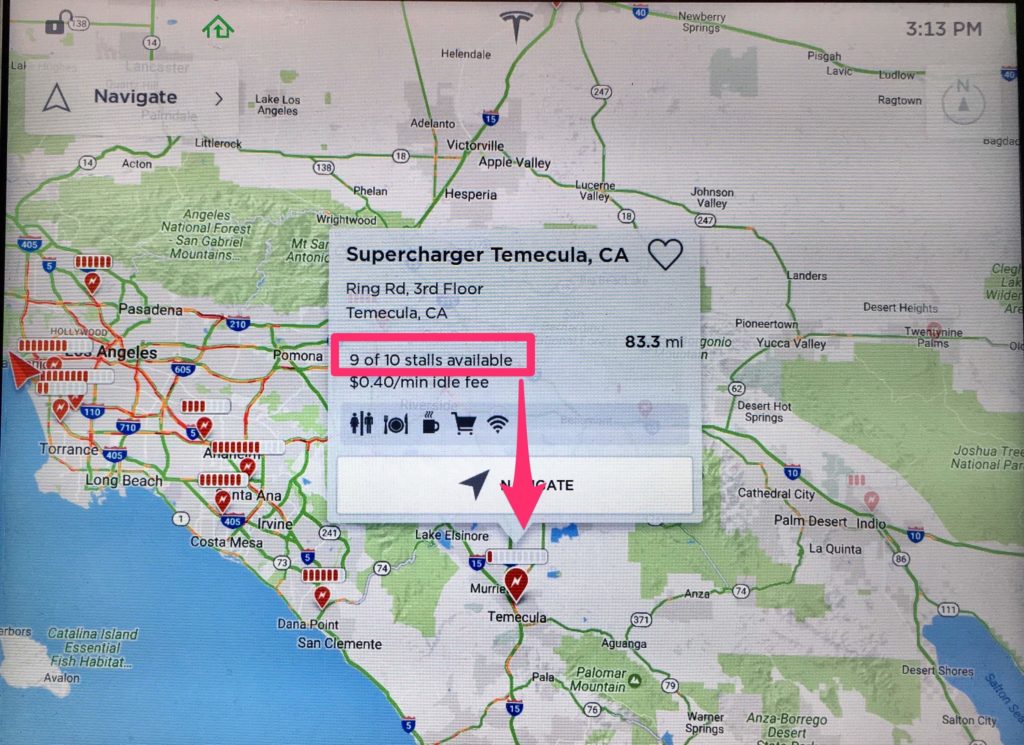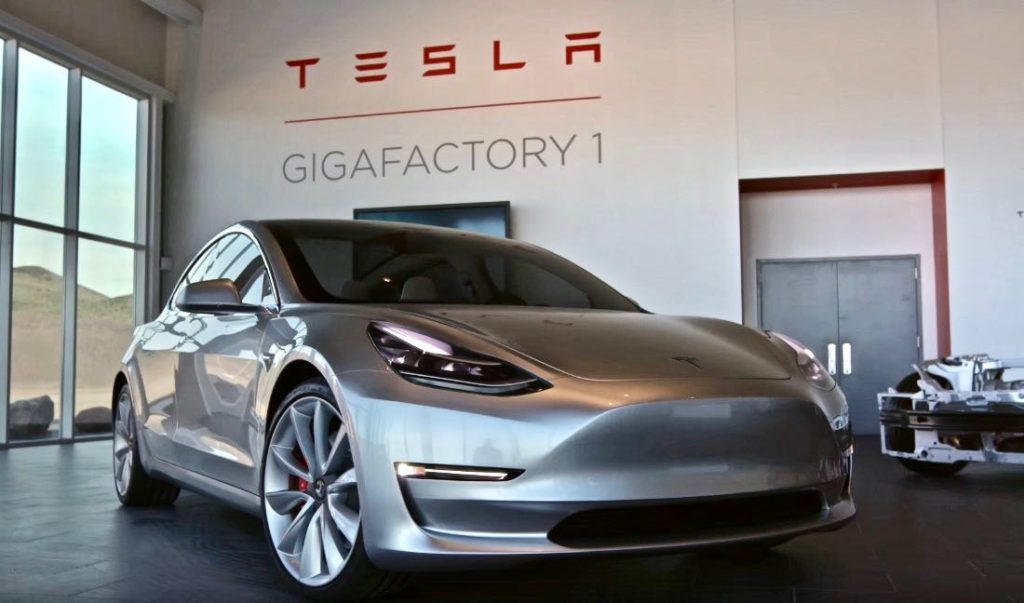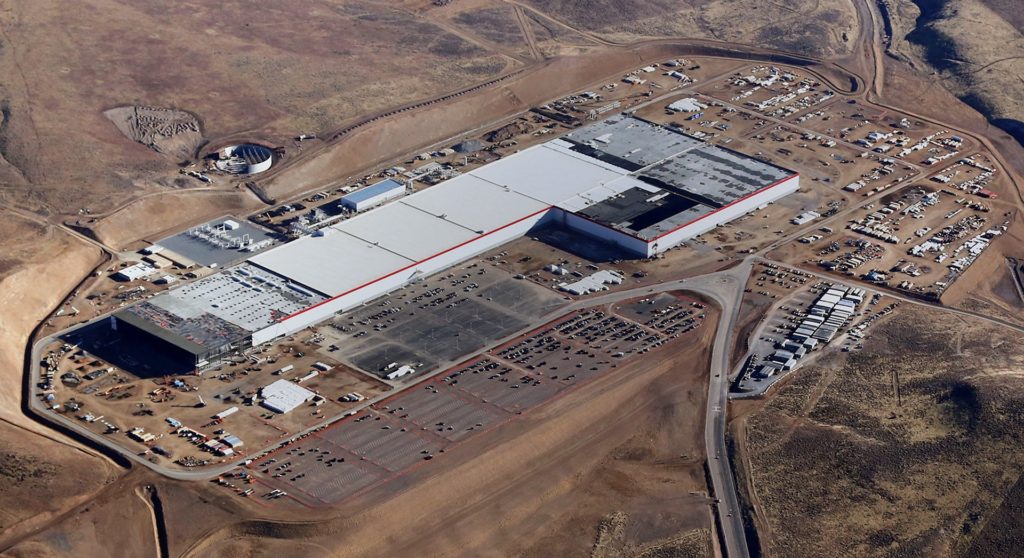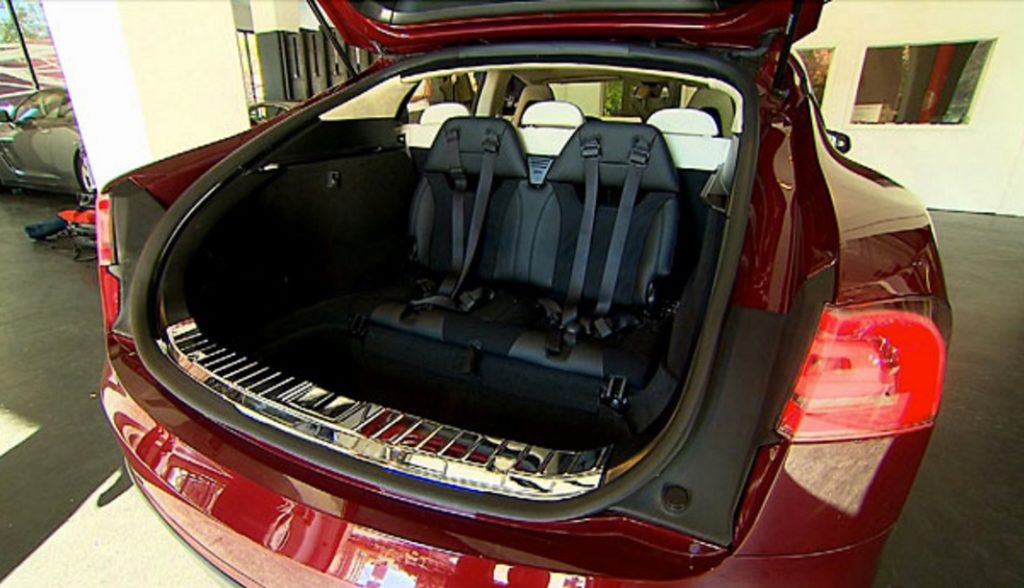News
Tesla Top 5 Week in Review: Model 3, Gigafactory, a brush with the law, and more
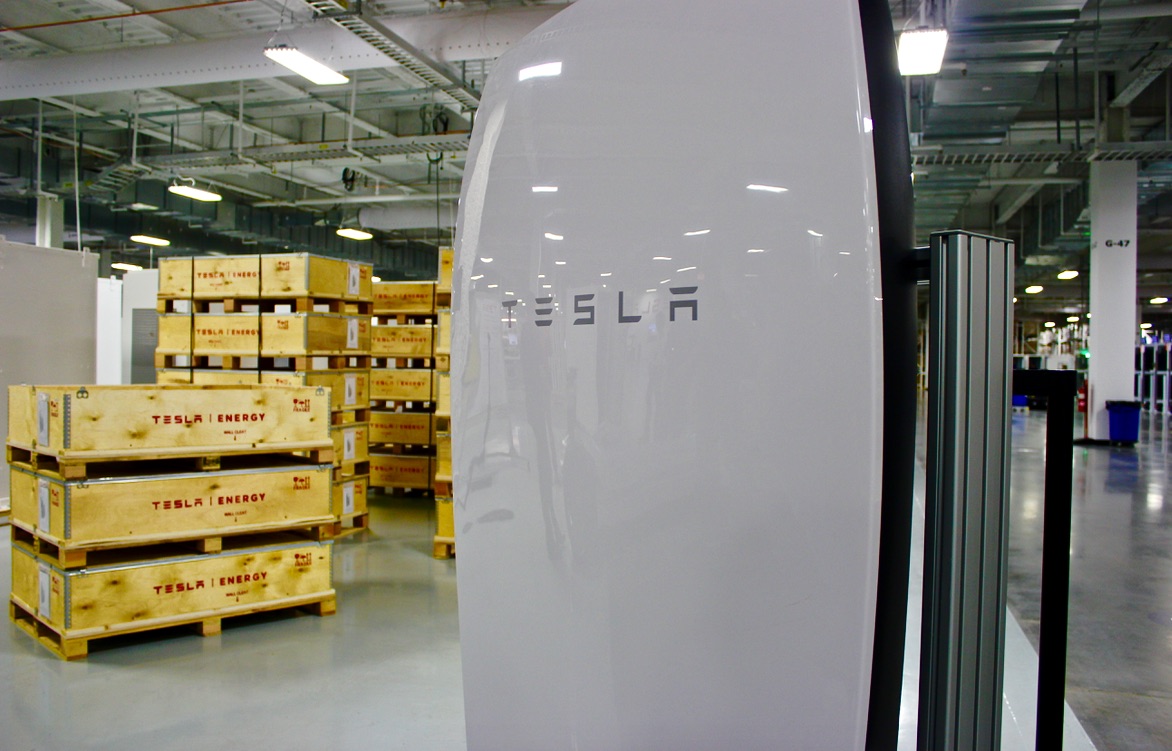
The Tesla Model 3 was big news again this week, as Tesla announced a February date for pilot production. Also, no longer will occupied Supercharger stations be so stress-inspiring, as Tesla has an onboard map update that shows Supercharger location availability. With news of a proposed federal import tax a topic of serious discussion, Tesla seemed on the winning side, with its prominent domestic manufacturing. The Gigafactory construction costs rose above $1 billion this week as noted through permits that Tesla filed. And a story emerged in which another Model S driver was detained by police who investigated reports of an abduction, only to quickly ascertain that rear-facing seats were the real culprit. Here are those stories in review.
Tesla to begin pilot production of Model 3 on February 20
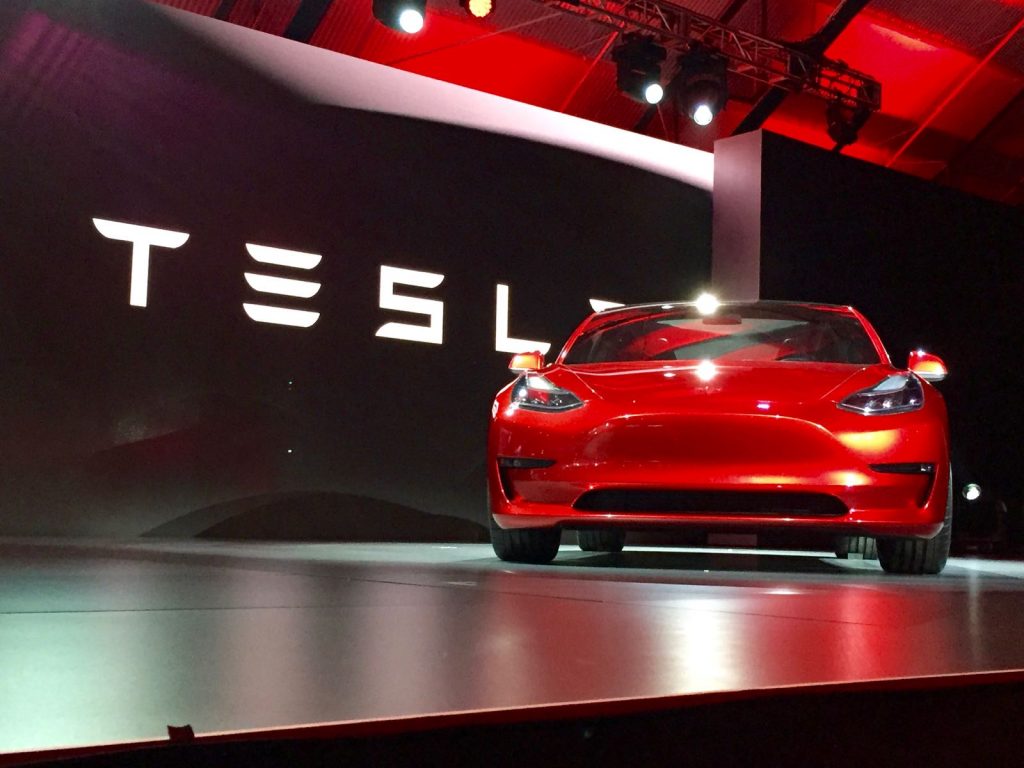
Red Tesla Model 3 at the vehicle unveiling event on March 31, 2016 from the company’s Hawthorne, CA Design Center.
As the more affordable all-electric vehicle in the Tesla catalog, the announcement of Model 3 pilot production staring on February 20 brought smiles to a lot of faces. The Model 3 will have a base price of $35,000, and that’s before government tax incentives. The appealing Model 3 price point is just a start: it will offer a range of at least 215 miles. The Model 3 pilot production creates a vehicle that is targeted for demonstration and evaluation, as pilot manufacturing is used to calibrate the assembly line, assess the car against design standards, and confirm quality of outside suppliers’ components. Some Model 3 pilot vehicles will be destined for safety crash tests, while others will generate media visibility. Importantly, strong demand for the Model 3 will push Tesla’s production capabilities, already exceeding 373,000 pre-orders.
Tesla unlocks real-time Supercharger occupancy data on vehicle map
Any Tesla owner will attest to the frustration that happens when you pull up to a Supercharger stall and find that it’s occupied. Knowing what’s happening at Superchargers ahead is newly improved. Tesla owners can now see Supercharger stall availability at a particular moment in time. Owners have already begun to report that data has appeared via the map app in the form of little bars over Supercharger stations that display availability. This is a very important component of Tesla’s overall goal to reduce range anxiety for its customers and to provide the smoothest and easiest vehicle experience of any currently available on the market.
Tesla on the winning end of proposed U.S. import tax
A new study suggests that Tesla would be well-positioned if a proposed federal tax on imports is implemented. Baum & Associates LLC determined that most automakers would need to add thousands of dollars to vehicle sticker prices to compensate for costs incurred with the import tax. Jaguar’s Land Rover would experience the worst case scenario with price increases near to $17,000, as it imports all its vehicles. Companies with significant domestic manufacturing would absorb only the smallest price increases among major automakers, with Ford accruing about $282 per vehicle and General Motors Co. at about $995. With its extensive domestic manufacturing, Tesla is the sole automaker that may be able to keep prices level. The study’s goals were to expose the relative impact of the tax plan on each automaker, according to Alan Baum, founder of Michigan’s Baum & Associates.
Tesla Gigafactory surpasses $1 billion in construction costs: Section D/E addendum filed
Tesla, Inc. has been granted a total of 153 building permits for its Gigafactory to date from the Storey County Community Development Department. In sum, the permits correlate with an estimated $1.03 billion in construction costs. Storey County remitted these permits after receiving $5.58 million in fees from Tesla. Twenty-nine permits are mentioned in an addendum, which total $542.65 million of construction work. Many of the other permits relate to the installation and anchoring of the equipment needed for the factory. Other permits include a nitrogen yard, a thermal energy storage tank, and the Panasonic equipment installed in Section B and C. In addition, the installation and expansion of the contractor accommodation indicated the number of construction workers on site has increased.
Tesla Model S rear-facing child seats lead to false kidnapping report
Tesla Model S owners who have opted for additional, rear-facing seats are aware that their size and location offers a fun and efficient place for youngsters to sit. The Sheriff’s Department in Newhall, California, who responded to reports of an abduction, didn’t have this same background knowledge about the Tesla Model S. It turns out that “it was not a kidnapping,” according to Lt. Rob Hahnlein, who spoke on behalf of the Sheriff’s Deparment, but, rather, an individual assisting a child into a Tesla. “The new Teslas have a weird back seat,” Hahnlein acknowledged, “and when they put the (child) in the back seat it looked like they were putting them in the trunk.” The Sheriff’s Department noted how they are obliged to investigate every kidnapping report until the situation is resolved. They also detained the Tesla driver at gun point with the child observing from the seats in question.

News
Tesla FSD fleet is nearing 7 billion total miles, including 2.5 billion city miles
As can be seen on Tesla’s official FSD webpage, vehicles equipped with the system have now navigated over 6.99 billion miles.

Tesla’s Full Self-Driving (Supervised) fleet is closing in on almost 7 billion total miles driven, as per data posted by the company on its official FSD webpage.
These figures hint at the massive scale of data fueling Tesla’s rapid FSD improvements, which have been quite notable as of late.
FSD mileage milestones
As can be seen on Tesla’s official FSD webpage, vehicles equipped with the system have now navigated over 6.99 billion miles. Tesla owner and avid FSD tester Whole Mars Catalog also shared a screenshot indicating that from the nearly 7 billion miles traveled by the FSD fleet, more than 2.5 billion miles were driven inside cities.
City miles are particularly valuable for complex urban scenarios like unprotected turns, pedestrian interactions, and traffic lights. This is also the difference-maker for FSD, as only complex solutions, such as Waymo’s self-driving taxis, operate similarly on inner-city streets. And even then, incidents such as the San Francisco blackouts have proven challenging for sensor-rich vehicles like Waymos.
Tesla’s data edge
Tesla has a number of advantages in the autonomous vehicle sector, one of which is the size of its fleet and the number of vehicles training FSD on real-world roads. Tesla’s nearly 7 billion FSD miles then allow the company to roll out updates that make its vehicles behave like they are being driven by experienced drivers, even if they are operating on their own.
So notable are Tesla’s improvements to FSD that NVIDIA Director of Robotics Jim Fan, after experiencing FSD v14, noted that the system is the first AI that passes what he described as a “Physical Turing Test.”
“Despite knowing exactly how robot learning works, I still find it magical watching the steering wheel turn by itself. First it feels surreal, next it becomes routine. Then, like the smartphone, taking it away actively hurts. This is how humanity gets rewired and glued to god-like technologies,” Fan wrote in a post on X.
News
Tesla starts showing how FSD will change lives in Europe
Local officials tested the system on narrow country roads and were impressed by FSD’s smooth, human-like driving, with some calling the service a game-changer for everyday life in areas that are far from urban centers.

Tesla has launched Europe’s first public shuttle service using Full Self-Driving (Supervised) in the rural Eifelkreis Bitburg-Prüm region of Germany, demonstrating how the technology can restore independence and mobility for people who struggle with limited transport options.
Local officials tested the system on narrow country roads and were impressed by FSD’s smooth, human-like driving, with some calling the service a game-changer for everyday life in areas that are far from urban centers.
Officials see real impact on rural residents
Arzfeld Mayor Johannes Kuhl and District Administrator Andreas Kruppert personally tested the Tesla shuttle service. This allowed them to see just how well FSD navigated winding lanes and rural roads confidently. Kruppert said, “Autonomous driving sounds like science fiction to many, but we simply see here that it works totally well in rural regions too.” Kuhl, for his part, also noted that FSD “feels like a very experienced driver.”
The pilot complements the area’s “Citizen Bus” program, which provides on-demand rides for elderly residents who can no longer drive themselves. Tesla Europe shared a video of a demonstration of the service, highlighting how FSD gives people their freedom back, even in places where public transport is not as prevalent.
What the Ministry for Economic Affairs and Transport says
Rhineland-Palatinate’s Minister Daniela Schmitt supported the project, praising the collaboration that made this “first of its kind in Europe” possible. As per the ministry, the rural rollout for the service shows FSD’s potential beyond major cities, and it delivers tangible benefits like grocery runs, doctor visits, and social connections for isolated residents.
“Reliable and flexible mobility is especially vital in rural areas. With the launch of a shuttle service using self-driving vehicles (FSD supervised) by Tesla in the Eifelkreis Bitburg-Prüm, an innovative pilot project is now getting underway that complements local community bus services. It is the first project of its kind in Europe.
“The result is a real gain for rural mobility: greater accessibility, more flexibility and tangible benefits for everyday life. A strong signal for innovation, cooperation and future-oriented mobility beyond urban centers,” the ministry wrote in a LinkedIn post.
News
Tesla China quietly posts Robotaxi-related job listing
Tesla China is currently seeking a Low Voltage Electrical Engineer to work on circuit board design for the company’s autonomous vehicles.

Tesla has posted a new job listing in Shanghai explicitly tied to its Robotaxi program, fueling speculation that the company is preparing to launch its dedicated autonomous ride-hailing service in China.
As noted in the listing, Tesla China is currently seeking a Low Voltage Electrical Engineer to work on circuit board design for the company’s autonomous vehicles.
Robotaxi-specific role
The listing, which was shared on social media platform X by industry watcher @tslaming, suggested that Tesla China is looking to fill the role urgently. The job listing itself specifically mentions that the person hired for the role will be working on the Low Voltage Hardware team, which would design the circuit boards that would serve as the nervous system of the Robotaxi.
Key tasks for the role, as indicated in the job listing, include collaboration with PCB layout, firmware, mechanical, program management, and validation teams, among other responsibilities. The role is based in Shanghai.
China Robotaxi launch
China represents a massive potential market for robotaxis, with its dense urban centers and supportive policies in select cities. Tesla has limited permission to roll out FSD in the country, though despite this, its vehicles have been hailed as among the best in the market when it comes to autonomous features. So far, at least, it appears that China supports Tesla’s FSD and Robotaxi rollout.
This was hinted at in November, when Tesla brought the Cybercab to the 8th China International Import Expo (CIIE) in Shanghai, marking the first time that the autonomous two-seater was brought to the Asia-Pacific region. The vehicle, despite not having a release date in China, received a significant amount of interest among the event’s attendees.
